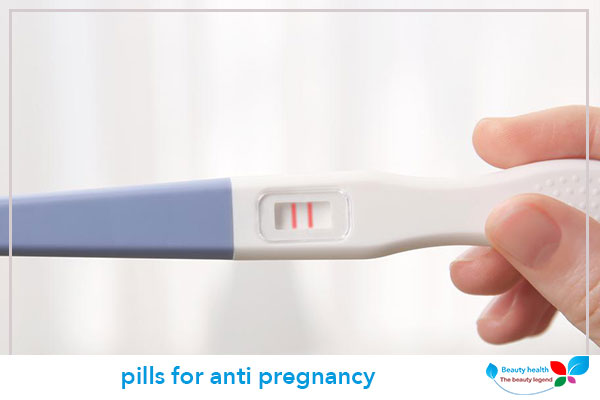Increased saliva during pregnancy
Increased saliva during pregnancy
Increased saliva during pregnancy | What is the acidity of the stomach and what effect does it have on saliva secretion during pregnancy? What are the causes of increased saliva secretion during the first months of pregnancy? What are the salivary glands? What is the relationship between chewing gum and increased salivation? What are the causes of drooling?
With the onset of pregnancy symptoms and the progression of pregnancy weeks, various signs of pregnancy appear, such as a change in the shape of the breast in the first days of pregnancy or an increase in the size of the abdomen, in addition to the various pregnancy secretions .
What does increased saliva during pregnancy mean?
The accumulation of saliva in the mouth early in pregnancy is one of the strange pregnancy symptoms that some mothers experience, although it is relatively rare.
What is the acidity of the stomach and its effect on increased saliva during pregnancy?
Heartburn is a condition characterized by burning pain, as this condition occurs when stomach acid flows into the food pipe.
Pregnant women usually suffer from heartburn due to the reflux of stomach acids into the esophagus, which causes the effect of the cells in the esophagus on the salivary glands to secrete saliva, which in turn adjusts the acidity of the stomach.
What are the causes of increased saliva during pregnancy during the first months?
- If your mouth is full of saliva more than usual, this is likely to happen early in pregnancy, that is, in the first months of pregnancy.
- Although this is normal, there is a reason for these strange symptoms, as experts believe that this is the body’s way of protecting the mouth, teeth and throat from the damaging effects of stomach acid.
- Also, excessive salivation is not a “dangerous” thing, but there is currently no treatment for this condition except for childbirth, although most cases end before birth.
What are the salivary glands?
The salivary glands are ductal glands that secrete saliva. They are solid formations consisting of millions of secretory cells. Thin channels run between these cells that collect saliva, carry it, and direct it to a single duct, which in turn carries saliva to the mouth.
What are the types of salivary glands?
The salivary glands are divided into:
Parotid glands:
- They are the major salivary glands around the lower jaw of humans and are the largest salivary glands.
- It also secretes saliva to facilitate chewing and swallowing, and amylase to start the digestion of starches
Submandibular glands:
- It is a pair of major salivary glands located under the lower jaws above the digastric muscles.
- The resulting secretion is a mixture of serous fluid and mucus, and it enters the oral cavity through the submandibular canal.
- About 65-70% of saliva in the oral cavity is produced by the submandibular glands, which are smaller than the parotid glands.
- This gland can also often be felt by touching the neck, where it is in the form of a round ball.
- It is located about two fingers’ distance above the prominence of the larynx and about two inches below the chin.
Sublingual glands:
- It is a pair of major salivary glands located under the tongue in front of the submandibular glands.
- The resulting secretion is mainly mucous, but it is classified as mixed adenomas.
- Where saliva comes out directly from 8-20 secretory ducts, and 5% of the saliva in the oral cavity is secreted from these glands.
Small salivary glands:
There are from 800-1000 small glands located throughout the oral cavity in the submucosal layer of the mucosa in the tissues of the oral cavity, tongue, lips, soft palate and lateral parts of the hard palate
Von Ebner’s glands:
- They are glands located in a circle around the capillary papillae on the upper surface of the tongue near its terminal sulcus.
- These glands also secrete a serous fluid that breaks down fats, which facilitates the perception of taste through the secretion of digestive enzymes and proteins.
- The arrangement of these glands around the circular papillae provides a continuous flow of fluid over the large number of taste buds lining the sides of the papillae, and this is important for dissolving the parts of food that must be tasted.
What is the relationship between chewing gum and increased salivation?
- Chewing gum usually increases saliva secretion and thus protects the teeth from decay. You can also identify toothache during pregnancy .
- Chewing gum relieves dry mouth, because it increases saliva secretion by about 10 times.
- This helps to moisturize the mouth and thus get rid of annoying mouth odor.
- Chewing gum also relieves esophageal reflux and stomach acidity by reducing acid in the esophagus .
- As for chewing gum when you are hungry, it causes bloating due to the activation of digestive acids.
Causes of drooling:
Saliva may occur from the mouth during sleep, and this is usually due to the open mouth position resulting from the use of drugs that depress the central nervous system or due to sleeping on one side.
Saliva may not meet at the end of the throat to create the process of swallowing to drain saliva, which leads to drooling during sleep.
Other causes of drooling include:
- Neurological diseases and stroke.
- Mental retardation .
- Nasal appendix.
- Cerebral palsy .
- Amyotrophic lateral sclerosis.






